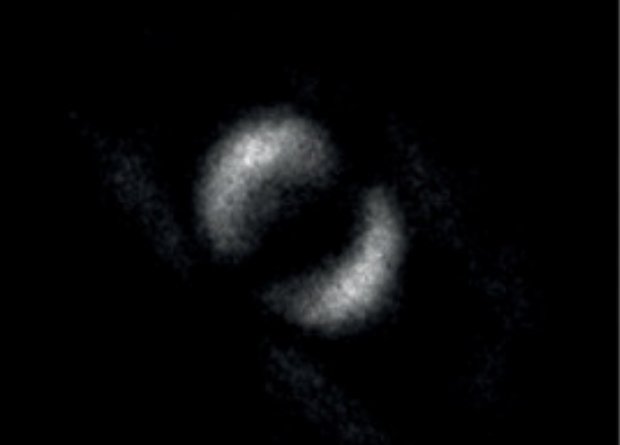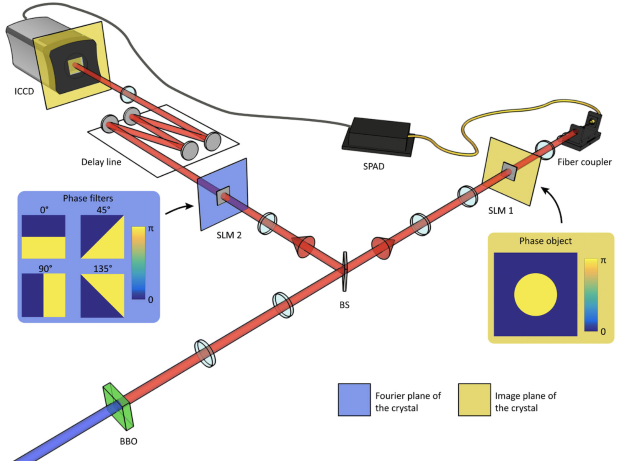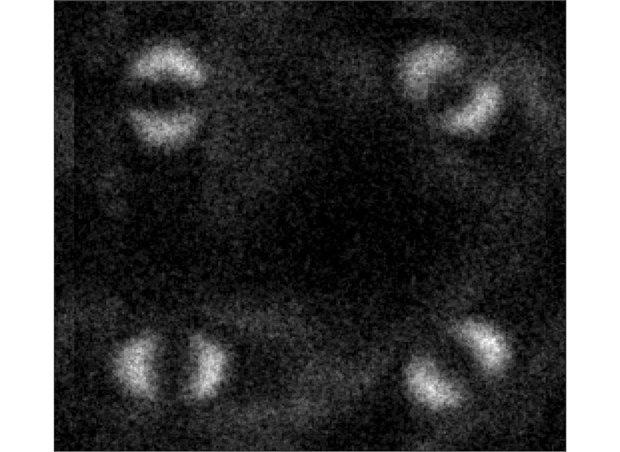Quantum entanglement is a phenomenon in which the quantum states of several particles are interrelated, regardless of the distance between them. This phenomenon is used in quantum teleportation, cryptography and computer technology. Einstein and his colleagues showed that if quantum mechanics fully reflected reality, knowledge of the state of one part of an entangled system automatically determines the state of another part. It turns out that information in this case is transmitted faster than the speed of light, which is impossible according to the laws of classical physics.

In quantum mechanics, particles are simultaneously waves with no definite position in space. Only when an observer appears, does the system have to accept one particular quantum state. Entangled particles affect the choice of each other’s state, even if there is more than a thousand kilometers between them.

Scheme of experimental installation. Source image.
Paul-Antoine Moreau (Paul-Antoine Moreau) and colleagues from the University of Glasgow separated pairs of entangled photons, one sent through a liquid crystal, which played the role of a spatial light modulator and changed the phase of photons, and the other directly to the detector. The camera recorded images of all photons at the moment when they underwent the same transformations, although they were separated in space. That is, at the moment of quantum entanglement.

The supersensitive camera was able to capture single photons and take pictures only at the moment when a pair of entangled photons hit the detectors. In addition to four separate images of pairs that passed through four different filters, the authors of the work received one photo with all four variations of the phase change.
The results of the experiment will push the development of technologies for obtaining images of quantum phenomena, which, in turn, will bring scientists closer to understanding these processes and their further application.
You got a 0.53% upvote from @minnowvotes courtesy of @kuku12170!